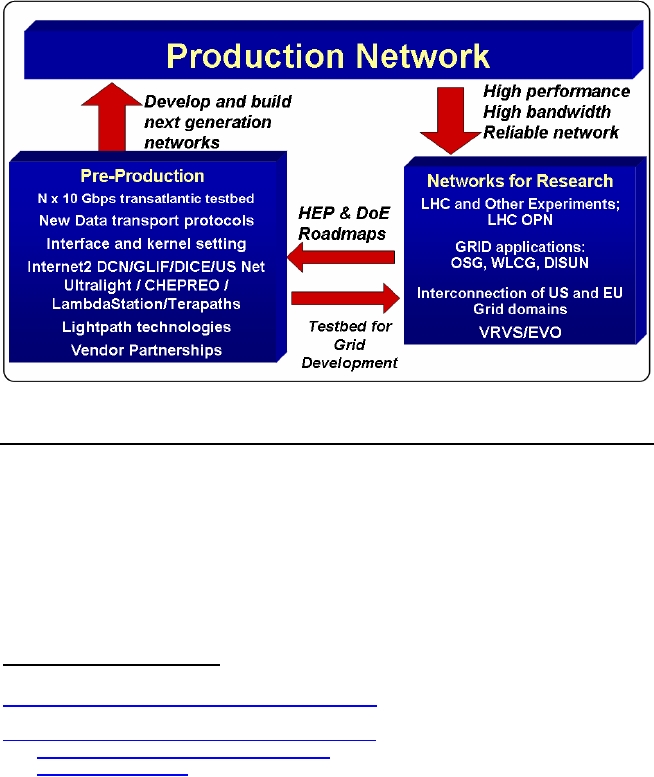to two years. This is driven by the fact that developing and maintaining a reliable, bandwidth-
efficient network service brings with it an ongoing need to (a) develop the expertise and
experience to work with higher performance, and often newer and more cost-effective models of
network routers, switches, optical multiplexers, servers and server-interfaces, (b) develop new
protocols and/or optimized protocol and interface parameter settings, to achieve new levels of
throughput over long distance networks and (c) develop new modes of monitoring and managing
networks end-to-end, while incorporating their capabilities (on increasing scales) into integrated
grid systems. This parallels the DOE Network Roadmap6, where the "Production" network is
accompanied by a "High Impact" network in which the next-round production capabilities are
Figure 15: US LHCNet Working Methodologies
US LHCNet Monitoring:
The US LHCNet network operations center (NOC) relies on CERN for its first line of support,
including 24x7 monitoring and alarm reporting. The first line of support uses Spectrum
monitoring8 and alarms to detect and react to network problems.
Starting in January 2007, US LHCNet is also exporting monitoring data to the GEANT E2ECU
using the perfSONAR9 monitoring system. PerfSONAR is a de facto monitoring standard
developed by Dante, Internet2 and ESnet and is the preferred monitoring tool for the LHC OPN
operations.
6
The DOE Science Networking Challenge: Roadmap to 2008 report is at
http://www.osti.gov/bridge/product.biblio.jsp?osti_id=815539
7
Also see the report of the DOE High-Performance Network Planning Workshop at
http://www.doecollaboratory.org/meetings/hpnpw/finalreport/
8
See http://www.gridtoday.com/04/0614/103373.html
9
See http://www.perfsonar.net
38

